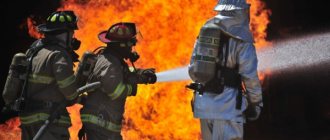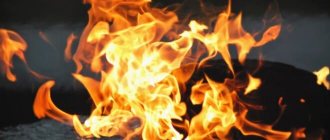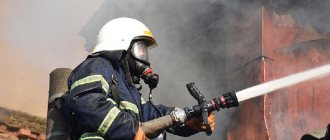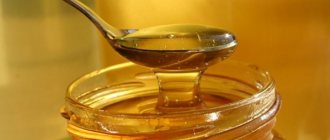How to extinguish a burning electrical appliance?
If an electrical appliance
is still under electrical voltage, the fire can be
extinguished
by covering the burning area with soil from a flower pot, washing powder, and baking soda. These substances will stop the access of air, and therefore oxygen, to the combustion site and extinguish the fire.
Interesting materials:
Where do the gypsies live? Where do ducks live in winter? Where do rooks from the Volga region winter? Where do sparrows winter? How to activate iPad if you forgot your Apple ID and password? How to activate troika for MCD through the application? How often should you feed your cat? How often do you need to change the oil in an automatic transmission? How often should you change your engine oil? How often should you change the oil in a manual transmission?
Causes of ignition of gasoline and other flammable liquids
One reason is the combustion temperature of gasoline.
The flammable substance can be:
- hard;
- liquid;
- gaseous.
Attention! The most dangerous, from a fire safety point of view, are gases.
Flammable liquids can ignite due to the following common reasons:
- electrical sparks entering tanks with flammable liquids;
- spontaneous combustion (as an option - peat);
- use of incendiary mixtures (pyrogels, white phosphorus, etc.);
- smoking in areas where petroleum products, gasoline and other flammable liquids are stored;
- warming up car engines using a kerosene lamp or open fire: very often drivers simply forget to put out the kerosene lamp and leave it in the garage;
- failure to comply with the rules for storing and transporting flammable substances;
- washing oily, oil- or gasoline-stained clothing indoors;
- violation of fire safety rules for premises where flammable liquids are stored;
- human factor (unwiped puddle of gasoline on the floor, a canister of kerosene left open, etc.).
Methods for extinguishing gasoline
So how can you extinguish burning gasoline, kerosene, oils and other flammable and combustible liquids?
The state has developed recommendations for extinguishing high-otane gasolines AI-92, AI-95 and AI-98 in tanks.
At the first stage of fire extinguishing, the following portable, mobile and manual means are used:
- fire extinguishers;
- textile;
- sand, earth.
Fire extinguishers
The markings on the devices will tell you whether they can be used to put out gasoline.
Ignition of gas fluid is a class B fire.
The means used to extinguish fires of this class are:
- Powder fire extinguishers. Used in transport (cars, planes, buses, etc.). The principle of operation is to block the flow of O2.
- Carbon dioxide fire extinguishers. They are used in everyday life as they do not harm electrical equipment. They are able to limit the supply of oxygen and reduce the temperature at the source of the fire.
- Foam fire extinguishers. They work by displacing foam from the foam concentrate onto the burning substance. It cools the fire and removes oxygen.
Attention! Powder fire extinguishers are not used in domestic conditions, since after their use some of the active substance remains. They spoil the decoration of the room, and cleaning them takes a lot of time and effort.
Sand
You can extinguish gasoline and other liquids using ordinary sand or dry earth.
It helps:
- stop the increase in burning space;
- extinguish the flame.
When extinguishing a fire with sand, the substance is poured along the perimeter of the fire, limiting the spread of the dangerous liquid. When the fire is contained, it can be extinguished by carefully pouring sand until the fire is extinguished.
Textile
An unusual but effective means of extinguishing LV is tissue. A fireproof fabric is used to cover the flame, thereby limiting the supply of oxygen to the source of the fire.
This method is often used in enterprises when igniting fuel in storage tanks. The cloth is simply covered with a burning device, thereby blocking further development of the fire.
Attention! In order to enhance the effect, the fabric is slightly moistened. Water helps reduce the temperature at the source of the fire.
We examine in detail the reasons why oil fires cannot be extinguished with water.
Fire is like a disease - it is better to prevent it than to fight it later. Fire safety of the premises is ensured by strict compliance with the requirements of fire safety rules and instructions.
If a fire does occur, there is no need to try to extinguish it yourself, unless this is the very beginning. After all, a fire, in essence, is the result of contact of ignition sources with various flammable substances and materials, and the choice of fire extinguishing means depends on the type of ignited substance. Therefore, before going to a fire fighting equipment store, it is worth familiarizing yourself with which extinguishing method will be the most rational in a given situation.
Fire conditions
Since fire is a chemical reaction, like any reaction, it requires certain conditions for its occurrence and maintenance. In particular, the following 4 conditions are necessary for the existence of fire:
- Fuel or combustible substance, that is, any substance that can burn.
- An oxidizing agent, that is, a component of a chemical reaction that has oxidizing properties. In the case of fire, as a rule, oxygen in the air acts as an oxidizing agent.
- Heat, that is, the energy that is necessary for the fuel and oxidizer to begin to enter into a chemical reaction in a certain place and at a certain time.
- To maintain a fire in a stable state, it is necessary for the chemical combustion reaction to proceed in a chain manner.
Why is water harmful?
The whole problem is the difference in density. Kerosene is lighter, about 800 kg per cubic meter, water holds a full ton per cubic meter. Therefore, the flammable liquid floats to the surface.
The water sinks under the kerosene, and the surface tension is wasted - the thinnest film does not envelop and cover the fire. So oxygen does not stop flowing to the flame. Kerosene blocks water and prevents it from evaporating. This means that it does not reduce the energy of the flame at all.
Rules for storing gasoline
Flammable and combustible substances are stored taking into account all safety rules for premises with flammable liquids:
- pouring flammable substances from one container to another must be done under strict control over the filling of the container;
- all storage containers must be technically tested and certified;
- containers with gasoline are prohibited from being placed near open flame sources and heating devices;
- Do not heat containers with a kerosene lamp or gas burner.
The speed and correctness of initial actions is the key to effective fire suppression in the future. Knowing how to use fire extinguishing agents as intended can save your life.
Detailed information is visible in the video:
Precautions when extinguishing
When extinguishing LV on your own, follow the rules to avoid injury and damage:
- do not start putting out a fire if you are wearing oily clothes or your hands are dirty with gasoline or other flammable liquid;
- When extinguishing a fire, make sure that there are no people within 10 meters of the fire;
- It is not recommended to extinguish the LV using water, this can lead to an explosion;
- It is advisable to extinguish LV fires in special clothing: hands should be protected with gloves, there should be no bare areas on the body.
Algorithm of actions when burning gasoline
If you witness the ignition of fuel, including gasoline, follow the instructions:
- Immediately notify the fire department about the fire or ask people nearby to do so.
- If a car is on fire, use the built-in fire extinguisher, directing the active substance from the edge to the middle of the fire.
- If there is a fire under the hood of the car, carefully open the lid using a stick or iron objects at a distance of 1-2 meters. Cover the fire with a cloth, use a fire extinguisher, or try to cover the flame with sand.
- If you are unable to extinguish the fire, move 10 meters away from the fire and wait for rescuers to arrive, and also follow what the fire service recommends.
- In cases where there are cars or construction objects nearby, warn others about the danger.
- Oil facilities and large enterprises must have an automatic fire safety system. If it does not work, staff must turn it on manually.
| Emergency services | Landline number | Cell number |
| Fire Department | 01 | 101 |
| Police | 02 | 102 |
| Ambulance | 03 | 103 |
| Single help service | 112 | 112 |
Pages
Questions can only be asked after registration. Please login or register.
The fuel, which is 99% pure water, burns an order of magnitude more intensely than conventional diesel fuel. The development used the principles of water structuring, changing the qualitative composition of a substance, and the principle of the transition of one substance to another. Scientists demonstrating how ordinary water burns say that the biblical miracle of turning water into wine was a miracle only for the people, but not for the author of the “miracle,” who knew real physics and which modern academics do not know. This project was submitted to the Ministry of Economic Development and approved by G. Gref, but for obvious reasons it was not given progress and is not being given. Here is the website https://kolohost.ru/?p=897, where you can watch the video!! Now the fuel crisis does not threaten us!
I couldn't watch it to the end. Even in Soviet times, water was added to fuel oil directly in front of the combustion chamber (boiler) - the water evaporating (from the high temperature) additionally atomized the fuel, resulting in better combustion and other benefits. Any petroleum fuel is lighter than water, and when combined with water they form an emulsion (which eventually separates into its components). Maybe the authors came up with some kind of emulsifier. but it's still nonsense.
It seems to me that no one will want to pour this water into their breadwinner until someone tries it, tells it and shows it to others. How does it affect the operation of the engine, the service life of the engine
otherwise “diesels worked for three years” but nothing specifically
I won’t say anything about 99% of water, but for 10-15 my parent poured 24 on the Volga and it was fine, but he didn’t drive in the winter, but I ride all year round, and once in the cold I had a joke, I started the car for 5 hours straight . And then I remembered about supercharging for water, warmed up the tube and started it with a dead battery, and swore off driving in winter with water. But acetone for gasoline, for a 55 liter tank you only need 250g, this is a real increase in power, for those who drive domestic cars, try it, you won’t be disappointed.
And here is a booklet on this topic Files: 1.doc
end Files: 4.doc
I have been interested in this topic for a long time. I supplied water to my 2107. True, apparently the rings were worn out. “sour cream” began to appear on the dipstick, so I stopped. But I passed the gases from the breather through the water and then into the air vent through a standard hose. I really liked this. Just drain the water every day and add fresh water.
I watched the video clip and repeated their experience. Happened. I won the argument with the observers. But!! I decided to move on. According to these “professors,” up to 50% of the fuel can be mixed with water. Made. Stir and give the mixture time to stand. In 10 minutes. in the bottle it was clearly visible where the water was and where the diesel fuel was. Naturally, there was no point in soaking the paper in solarium and setting it on fire. So I turned the bottle upside down, let it sit, and then carefully opened the cap and wet the paper. Naturally, wet paper does not burn. Accordingly, there can be no talk of changing the structure of water. After thinking about it, he swirled the contents of the bottle and immediately put the paper in it and, taking it out, began to set it on fire - it did not burn, however. The trick of these weirdos seems simple. Having dropped a gram of solarium into a bottle and shaken it, you definitely need time to settle. During this time, the solarium rises to the surface and forms a thin film that is practically invisible. But when you put paper into a bottle and while pulling it out, a very thin film sticks to the surface of the paper, which, when ignited, ignites. I guess so. Maybe someone can explain it differently?
Fire hazard of flammable liquids
Flammable liquids include substances with a low flash point (oil, acetone, kerosene, gasoline, etc.), which ignite in a matter of seconds. The danger of flammable liquids lies in their ability to maintain the combustion process after removing the ignition source. At any time of the year and at any air temperature, the slightest spark caught in such a substance can cause ignition.
Petrol
Refers to flammable liquids.
There are different types of gasoline brands:
The conditions and purpose of their use vary.
| Gasoline brands | Flash point, ℃ | Self-ignition temperature, ℃ | Ignition area by volume, % | Ignition temperature limits, ℃ |
| Aviation | from –34 to –38 | 380–475 | 0,99–5,48 | from –38 to +5 |
| Automotive | from –27 to –39 | 255–370 | 0,76–5,16 | from –39 to –8 |
Kerosene
This flammable substance can cause an explosion when heated above 37 degrees. The fire spreads rapidly if extinguishing is not started in time. Eliminate the source of fire with powder fire extinguishers. The substance irritates the nasopharynx and skin, so when extinguishing fires, rescuers must wear protective gloves and masks.
How to overcome it?
How to extinguish gasoline? To put it out, you will need to cut off its oxygen supply in another way. It is better to cover the flame with earth or sand. If the fire is growing slowly, first try to cover everything around it so that it does not start to spread further. If a container of gasoline catches fire, then these methods are not suitable. Here you need to act differently - cover the container with a cloth (the denser the better).
Water is usually used to extinguish burning wood, textiles, paper, i.e. solid substances. When igniting liquid flammable substances, such as gasoline and other petroleum products that are insoluble in water, water is used only with the addition of fluorinated surfactants.
In the event of a fire in household gas or other gaseous substances, water can only be used to cool the equipment.
Do not use water when extinguishing burning metal-containing compounds, alkali metals such as sodium, potassium. These substances enter into a chemical reaction with water, which results in the release of heat, which will further aggravate the situation. In this case, the only acceptable method is extinguishing with special powders. It is also prohibited to use water in the event of a fire in electrical equipment or electrical wiring. Therefore, do not rush to use fire hoses in case of fire: the cost of a mistake can be very expensive.











